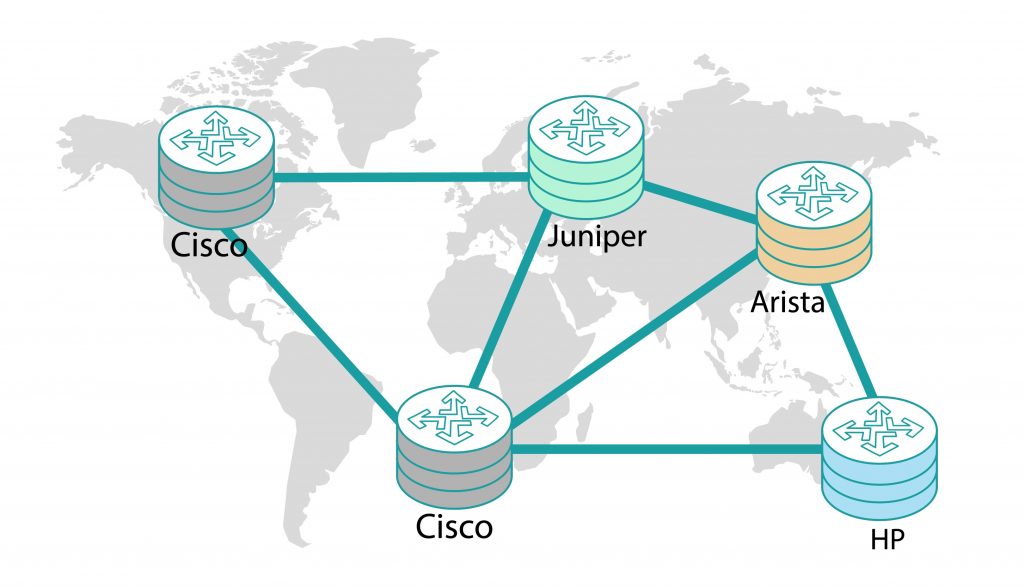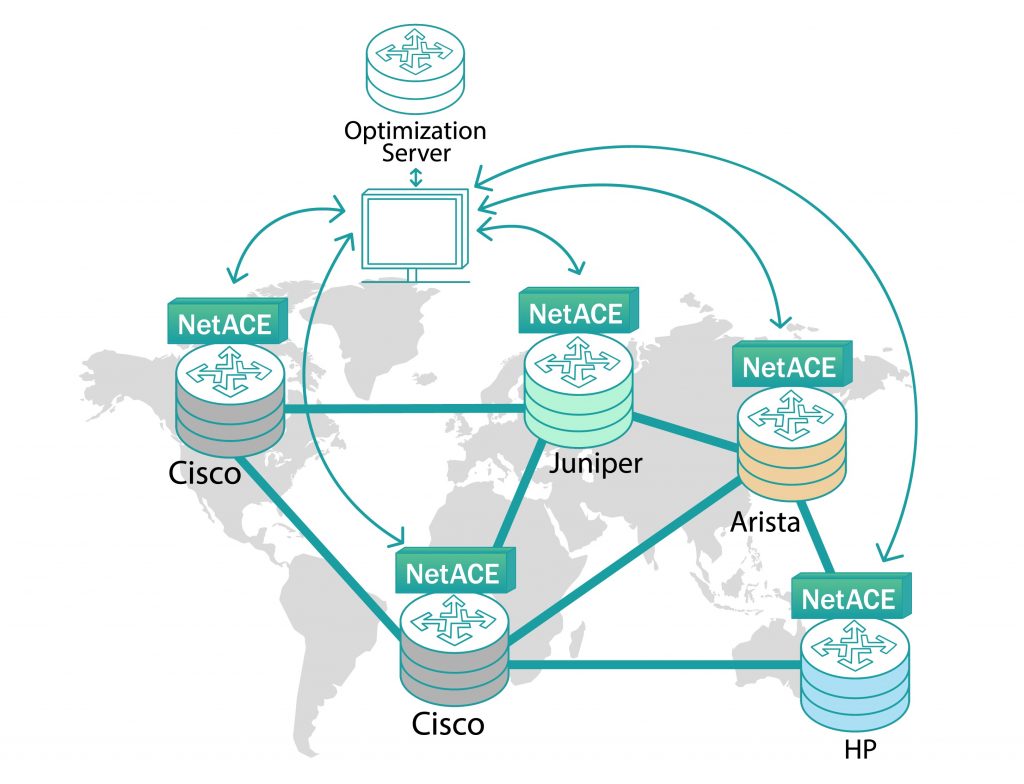

Network operators have already begun to implement the online traffic engineering mechanism to reduce network complexity and add control flexibility across multi-area, multi-level networks. Nevertheless, some network equipment vendors have yet to incorporate this technology and for those that have their implementation may be too complex or costly for a variety of public and private network applications.
NetACE is a short-cut to faster and easier with improved cost-effectiveness implementation of segment routing/PCE solution
The following example shows a common scenario of a large enterprise offering data center-based services, and demonstrates the need for different type of solution:

Defining cross-network services and configuration requires a view of all components in each of the data centers as well as the ability to communicate with them. This includes the ability to change their connectivity settings, monitor their performance and set new services. In addition to the actual devices that comprise the data center infrastructure, there additional equipment in each data center that handles to communication between the sites. In many cases, the vendor for this equipment differs from that of the infrastructure.

The NetACE solution provided a unified and consolidated control and monitoring solution, covering the entire multi-vendor network. The same solution works whether it is a single location with several vendors included or a global multi-site, multi-vendor topology. NetACE uses standard API protocols to communicate with each piece of vendor equipment, and uses its libraries to support all configurations and features of each type of equipment. Currently, NetACE supports more than 40 vendors and 1000 device-type libraries, covering most of the types of equipment implemented in data centers. A new library for equipment that is not currently supported can be added in a matter of days.
In addition to the control and monitoring, NetACE allows optimization servers to access and view the entire scope of network resources, as well as the ability to configure different network elements based on their optimization algorithm. This solution allows optimization servers to focus on optimizing the network while leaving the connectivity issues to NetACE.
NetACE is a vendor-agnostic solution that allows unified monitoring and control over a multi-vendor network is global multi-site topology. NetACE has a built-in automated system that discovers all network elements and the topology that connects them. Once the system topology is discovered, the system allows the operation or upper layer management systems to monitor and control any element in the system regardless of equipment vendor. The communication uses standard management protocols adapted to the protocol that the specific equipment supports. A high-level overview of the entire network allows NetACE to define alternative routes in case of fault, to quickly and without errors rollout a new service across the network, and to immediately replace settings for a faulty component.
NetACE includes a standard REST API that allows upper layer management systems to benefit from overview and control of the entire network. The same interface can be used by optimization servers in order to view network resources and perform changes needed in the network elements for network optimization.